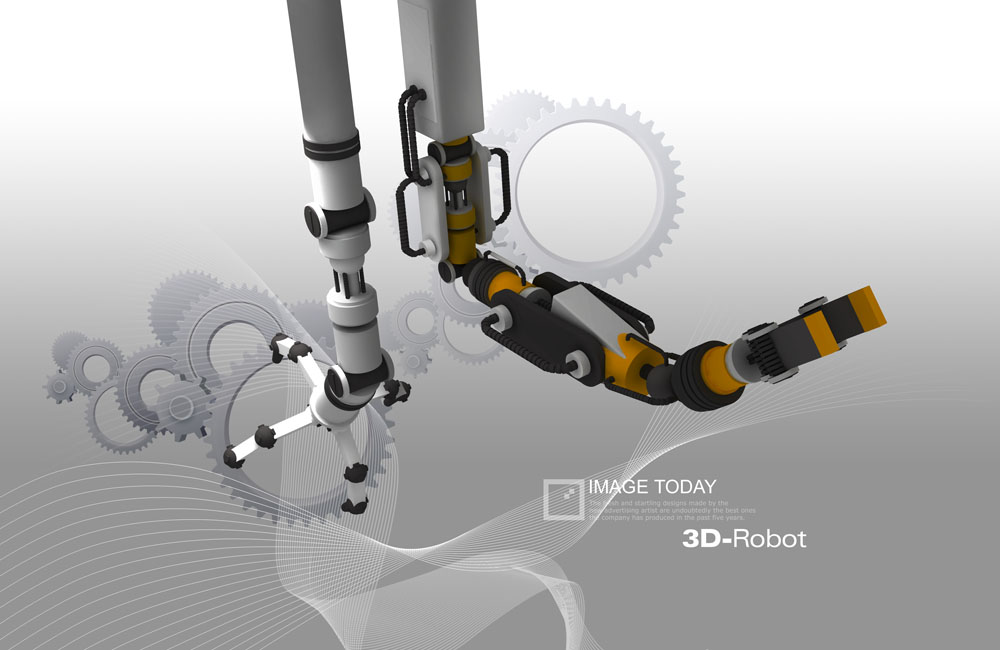HGT Thin Section Sealed Bearing for Industrial Robots Structural Design and Analysis

Featured by high combined load capacity, high precision, low frictional torque, lightweight, and stable operation, the thin-section four-point contact ball bearing and thin-section crossed roller bearing is suitably used on some industrial robots, such as waist, elbow, wrist, etc.

Structure
The bearings for robots usually have two types: sealed type and open type. The bearing with seals is sealed type; otherwise, it is open type. It mainly consists of an inner ring, outer ring, cage, and steel balls/non-contact seal. The outer ring and the inner ring are integrated with the main body. The steel balls contact the raceway of the inner and outer ring at four points. The cage is a crown-shaped plug-in structure. The bearings with these structural features are used on the wrist, elbow, and other joint parts.
Characteristics
1. Small cross-section and lightweight
For the thin-section four-point contact ball bearing, the ratio of the outer diameter to the inner diameter is small. Each bearing has many rolling elements of small diameter. Compared with the standard bearings of the same inner diameter, the thin-section four-point contact ball bearing has only one-twentieth the weight of the standard bearings and one-fifth the cross-sectional area of the traditional approaches.
2. Uniform cross-section
The thin-section four-point contact ball bearing has a uniform cross-section, which means that the cross-section does not change regardless of how inner and outer diameters vary.
3. Small width and high load-carrying capacity
The thin-section four-point contact ball bearing can carry a radial load, two-way thrust load, and tilting moment. The bearing of this type is like two sets of angular contact ball bearing in the back-to-back arrangement. Moreover, its width is the same as only one set of angular contact ball bearings instead of two sets.
Design
Design Optimization of Principal Parameters
The determination of the principal parameters is a crucial part of the process of bearing design. The main parameters of the thin-section four-point contact ball bearing include the diameter of steel balls, the number of steel balls, and the pitch diameter of the ball. The values of these parameters should consider the operational performance, such as the maximum rigidity, minimum friction torque, etc., which helps maximize the service life of bearings. Due to the thin wall, the best value of pitch diameter of the ball set should be the average value of inner diameter (d) and the outer diameter (D). The principal parameters of bearings are determined by the grid method through the PC optimization program according to the objective function and the constraints.
Main Structural Parameters
According to the conditions (such as working performance, long service life, high rigidity, and low friction) required by the industrial robot applications, HGT Bearings maximize the dynamic load ratings in the design process. At the same time, due to the small cross-sectional area, HGT thin-section bearings require every structural parameter to achieve the optimized value to improve the contact stress distribution of bearing parts, which helps lubricant film form the optimal contact condition; thus, enlarging the service life of bearings.
Sealed Structure
Industrial robots tend to focus on miniaturization, being lightweight, and being high-precision; therefore, it is optimal to use bearings with sealed lubrication methods for industrial robots. Sealing performance is one of the critical indicators when evaluating sealed bearings. The rotten seals will lead to early damage on sealed bearings because the lubricating grease gradually becomes less effective when contaminant enters the bearings. Therefore, sealing should be safe and reliable; simultaneously, the specific working requirements and the specific structure of bearings should be considered when designing sealed bearings.
Our efforts
The special sealed bearings for industrial robots (such as the thin-section four-point contact ball bearing and the thin-section sealed crossed roller ball bearing) have the thin wall of ring and unique structures; therefore, the requirements for this type of bearing are very high and strict. Through the research on the critical technologies of the two types of bearings for industrial robots, we have provided strong technical support for developing special bearings for industrial robots and laid a solid theoretical foundation for industrial robotic production bearings.


 info@hgtbearing.com
info@hgtbearing.com